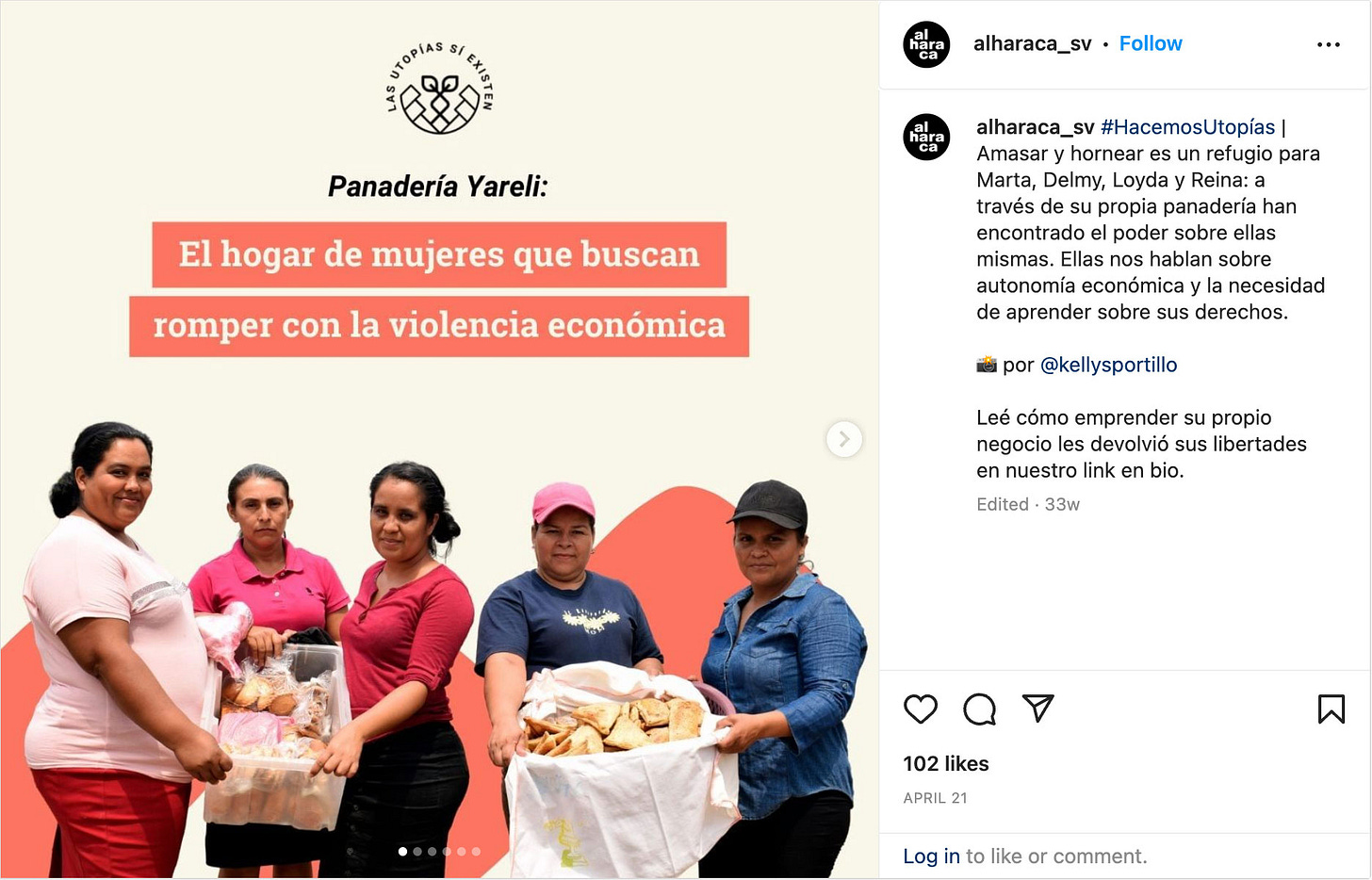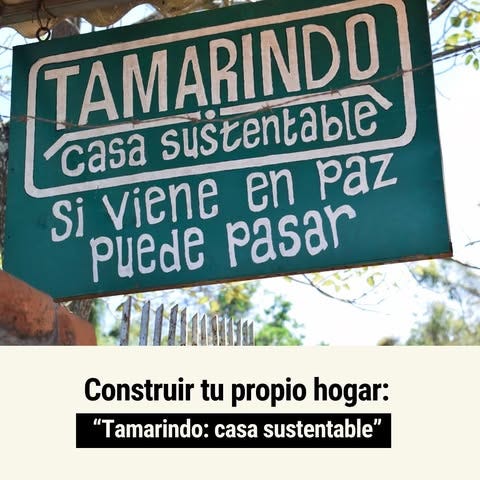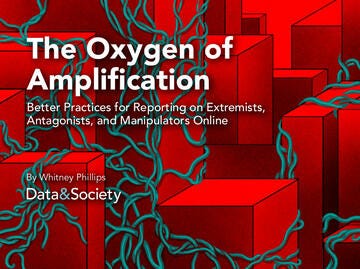We Make Utopia: How to tell a new story about civil society
A Narrative Communications Strategy Toolkit for activists to reframe civic space
My self-talk in these dark times is that civil society and human rights exist precisely for moments like these. Like a candle, we are needed most in the dark.
To counter a coordinated set of global anti-civic space narratives, it is time for all of us to unite to tell a different story, to nurture a shared pro-civil society narrative.
That is why in 2023 we prepared a toolkit, together with Met Group and a group of civil society groups in El Salvador, which can be used by activists anywhere to develop their own narrative communication strategies. Resharing it now because it feels particularly relevant in this moment.
Civil Story: Telling the Story of Civil Society
In five years of working on narrative change with civil society groups around the world, we see groups facing a common set of narrative challenges that drive shrinking civic space - but we also see that they share a common worldview that can form the basis for a response.
Anyone can use this toolkit to start spreading pro-civil society narratives today.
What you can find in the toolkit
How to develop and test messaging.
How to identify the kinds of stories that bring your narrative to life, and work with media organizations and other storytellers to create content.
How to create digital brands to spread those stories, using micro-targeting and a/b testing.
Basic tips for responding to narrative attacks (pdf cheatsheet here).
It’s the community, stupid! How to talk about the civil society we want
In hope-based communication workshops around the world, civil society groups have articulated a similar set of values that underpin their work: community, empathy and a belief that change is possible. The imagery they come up with shows people coming together in parks, caring for each other and gardening.
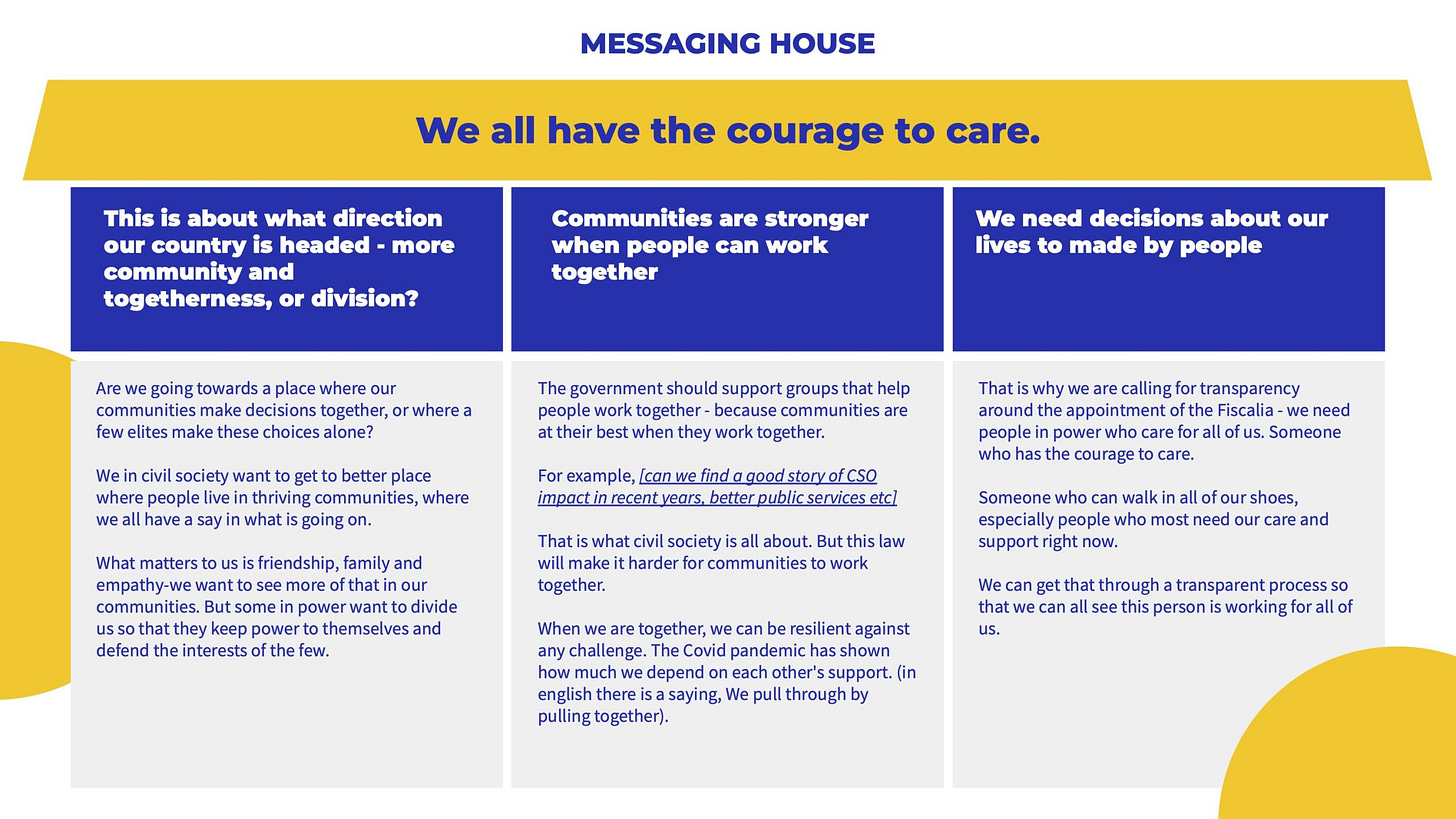
We need creative muscle to tell stories of community
How can we tell stories from across a country that might shape or change public attitudes and behavior (and particularly not to use new digital marketing tools)?
In El Salvador, we worked with Alharaca, a feminist media outlet, asking them to produce stories about people who are making changes for their community to show that civic engagement and citizen participation are really normal and common things in society.
To give Alharaca direction, we provided a brief describing the story activists wanted to tell about civil society. Alharaca reporters then fanned out around the country finding and documenting those stories.
Utopias exist
They created a beautiful series of stories under the title “Utopias Exist”, shared on social media as “We make utopia”.
The series showed what civil society looked like through the lens of community, empathy and resistance with stories of community gardens, community organizers, women bakers, local schools, LGBTQ+ activists and sports schools (here on Instagram, here on their website.
Alharaca reporters told stories like Los Angelitos, who in the absence of the state showed agency to protect themselves and environmentalists, among others. They grouped stories around four loose themes: build, hope, rebirth and resistance. They felt that stories under the “build” theme were the strongest, drawing much more constructive engagement from readers.
Check out the stories here.
Insights for telling the Civil Story
Alharaca didn’t just tell new stories, they used different storytelling formats and approaches too. This allowed them to reach people interested in sports, cooking and green living.
These are people who potentially share civil society values but are less likely to engage in overtly political content. Yet engaging them with these stories gets them talking about our messages and potentially makes them more likely to defend civil society.
The insights from Alharaca allowed us to identify a new target audience segment: people who were not yet involved in demonstrations but who might be prepared to join a campaign to “build” civil society, rather than “fight” for it.
The engagement on this content was a great example of “quality over quantity”: I particularly remember one comment on this post about a sort of social housing project which asked “Why can’t we also have this in our community?” A great example of how showing a solution starts to make it seem not only possible, but common sense!
Distribution: Creating Narrative Brands
We also created a brand to promote these stories to specific target audiences who were likely to share them. We used the color palette of the Salvadorian flag and called it Community for El Salvador.
We created this channel to test messaging, with a view to potentially being a platform for more concerted narrative change efforts in future (because, for example, many of the CSO staff felt nervous about using their own channels to push out messaging, creating the need for a platform solely dedicated to narrative change) .
A civil society version of solutions journalism
To spread relatable, engaging stories that bring to life the narrative we want around civil society, we need either more solutions journalist like Alharaca, or new storytelling initiatives like To Dziala in Poland (see below).
The same way solution journalism aims to focus the news on constructive stories and movement journalism tells the news from the perspective of affected communities, we need initiatives that operate purely for the sake of making intrinsic values more salient in society.
If we want our narrative to grow, we need a media eco-system in which to plant the seeds.
What we need to do next: Narrative change through repetition
Our narrative can’t be strong if it is not out there: we have to bring it to life with content and make sure that people see it and share it. We need organizations focused on achieving scale and salience for pro-civil society narratives.
The low hanging fruit of narrative change for civil society is civil society itself.
If we can focus our movement on promoting pro-civil society messages, they have a much greater chance of reaching the mainstream.
The first step is to organize the most obvious target audience: ourselves.
There are thousands of influential people working in civil society around the world. We want to encourage them to promote narratives based on their values, instead of always reacting to others.
Modern communications depends on all of us being “influencers”: whenever someone in the community needs to get more engagement on a post to get attention or supportive comments to drown out trolls, people from CSOs around the world must mobilize to support them.
This is simple but very concrete international solidarity in action.
This collective action can support people coming under direct attack, but it can also be organized to elevate stories that build support for civil society (see the Love Army example from Sweden). In other words, it can be used to build narrative power for civil society groups everywhere.
Do you find the toolkit helpful? Please let us know. If so, maybe share it with anyone working on narratives and shrinking civic space today.
Read more: Hopey, changey stuff
Kathryn Sikkink warns us that narratives about democracy/civil society in peril create a perception that we are ineffective while also harming activists' well-being and motivation. ( A Cautionary Note about the Frame of Peril and Crisis in Human Rights Activism (p 171 on the pdf))
Inspiring examples: Civil society: It Works! - experience from Poland and elsewhere
The toolkit includes a case study section to pay credit to the great campaigns and campaigners around the world who inspired this approach.
In Poland the “Civil Society. It Works!“ campaign creates a steady flow of authentic stories of people making their communities work better.
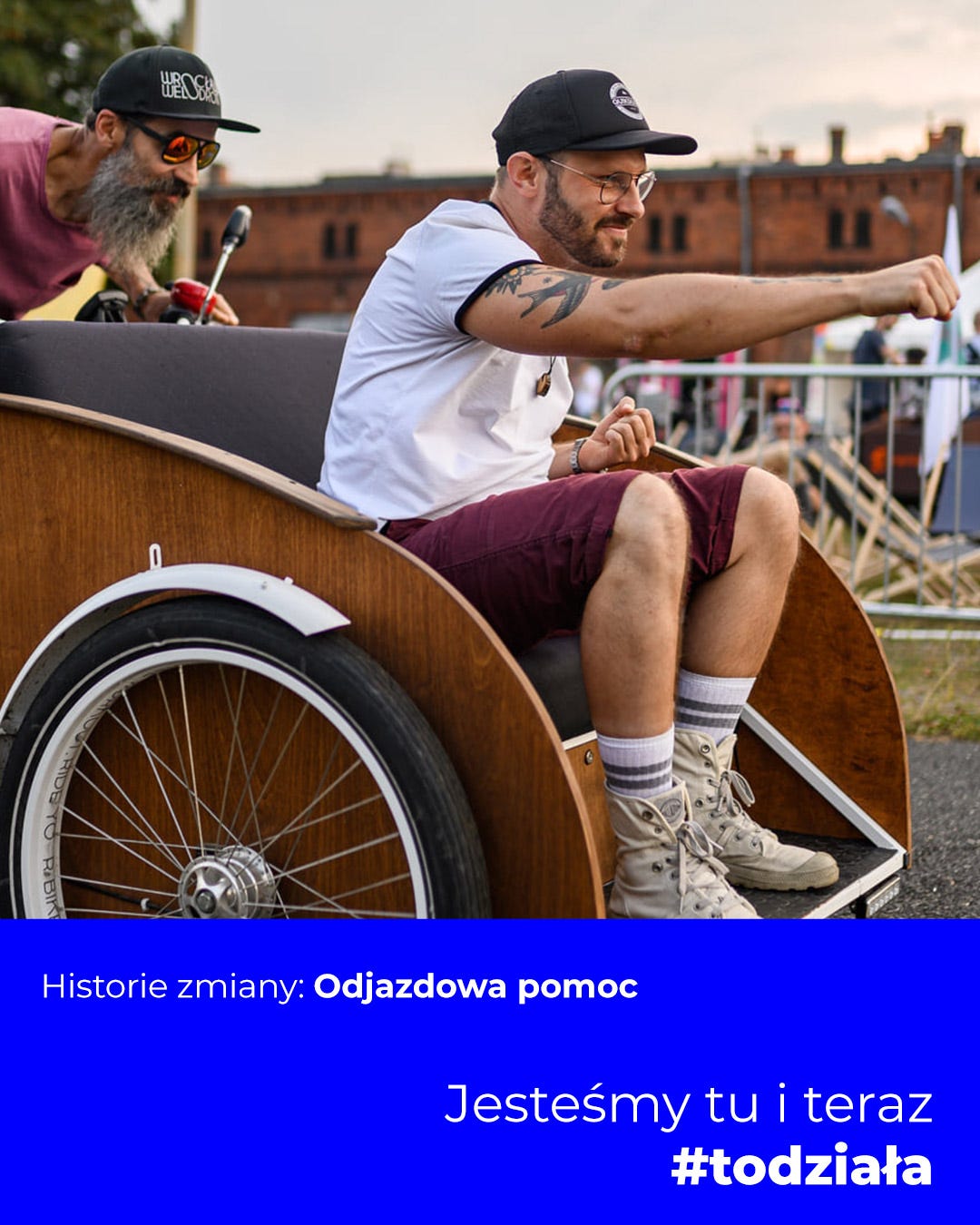
Help us share the toolkit with civil society
The toolkit is available in English and Spanish. Please share this with anyone trying to change the narrative on civil society!
Brain Science Corner
Sunlight does not disinfect; it makes things grow. For more on this, see the work of anti-racism researcher Whitney Phillips Twitter thread, report, article, podcast, story. (I recommend starting with the podcast).
This means we cannot just raise awareness about shrinking civic space and anti-CSO narratives. This reinforces a sense of failure and hopelessness, precisely at the time we most need a strong, ambitious, confident civil society.
Quote of the week
“Violence is the power of the state; imagination and non-violence the power of civil society.” - Rebecca Solnit, Hope in the Dark.







